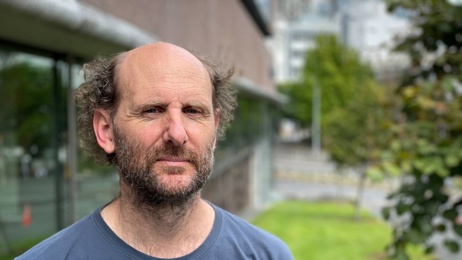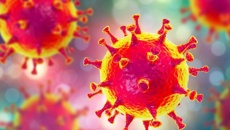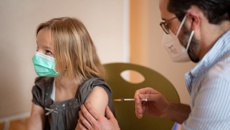As New Zealand faces a new health crisis, memories and stories of pandemics and epidemics of the past remain vivid in the minds of many. Julia Gabel explores the lessons from history - especially how past mistakes have affected Māori.
The world has faced pandemics and epidemics for thousands of years - from the Antonine Plague in the Roman Empire, the Black Death of the 14th century, the 1918 "Spanish flu", with an estimated 50 million deaths, to the Covid-19 global pandemic today.
When historian Geoffrey Rice unveiled a memorial for the 1918 influenza pandemic with Prime Minister Jacinda Ardern in November 2019 in Wellington, he used his speech to warn of the lessons that could be learned from that period a century ago.
"The big lesson of 1918 was that the government back then had no pandemic plan, it was very complacent, and adopted a 'let's wait and see' policy and it was disastrous," he said.
"I said ... the big lesson for you politicians if we get another pandemic you've got to move very fast on the best advice, you've got to be decisive and act quickly."
Several months after that unveiling, New Zealand would report the first Covid-19 case, "alert levels" would be introduced and heavy restrictions placed on the border.
Chairman of the Maniapoto Māori Trust Board, Keith Ikin, said in the first Covid-19 outbreak, they mobilised quickly and set up call centres to stay connected with their people while organising care packages.
Rice called the events of the 1918 flu pandemic New Zealand's worst public health disaster.
"Nothing else has killed so many New Zealanders in such a small space of time, not even the battles of the First World War."
It would claim around 9000 New Zealand lives in the space of two months and Māori suffered greatly with about 2500 deaths.
In a NZ History article, historian Elizabeth Cox said Māori communities were devastated in 1918 and also faced "prejudice at the time, with Māori somehow blamed for the pandemic".
She wrote: "While many Pākehā communities banded together, they sometimes left neighbouring hapū and marae to fend for themselves."
Examples of great Māori bravery in the face of the 1918 pandemic emerged, Cox wrote, including the story of Marion (Mereana) Hattaway who led the battle against the disease in Te Kuiti at Te Tokanganui-a-noho Marae.
Health research analyst Dr Rawiri Taonui said despite being heavily impacted with death rates nine times higher than Pākehā, Māori faced differential treatment.
"There was a lot of racism around the flu pandemic. They had separate hospitals, but a lot of those hospitals were town halls. Not in all cases, but generally Pākehā sites had doctors and nurses, and Māori sites were lucky if they had nurses."
In his book Black Flu 1918, Rice said this strain of the virus was unusual as – along with elderly and infants – it killed healthy adults in the prime of their life, especially between 20 and 45.
Rice said little was known about viruses in those days, with aspirin used to keep temperatures down - and it wasn't until the invention of the electron microscope in the 1930s that scientists were able to identify viruses - while "good nursing" and "enlightened leadership" were some of the only remedies in 1918.
The flu spread when the SS Talune ship sailed from Auckland to mainly Fiji and Western Polynesia – with Western Samoa, as it was known then, the worst-hit country in the world with an estimated 22 per cent of the population, or 8500 people dying.
Minister for Pacific Peoples Aupito William Sio said as infected people got off the steamship in Apia, the disease spread like wildfire and the township was devastated.
"I heard stories get passed on by word of mouth how in the evening you'd have a conversation, and all would be well, and in the morning, people would've died; wouldn't wake up. That was how devastating it was."
It wasn't only the significant loss of life that was devastating - but also the loss of family oral histories, cultural practices and indigenous knowledge that were usually passed on to the next generation by word of mouth, Sio said.
"You had young children who had not yet memorised their genealogies, you had not yet memorised land boundaries, who had not yet memorised a lot of other cultural practices."
/cloudfront-ap-southeast-2.images.arcpublishing.com/nzme/YP4GAKOQXOXOZTKX6CTTIPBS6I.jpg)
Minister for Pacific Peoples Aupito William Sio says Western Samoa, as it was known then, was the worst-hit country in the world by the 1918 influenza pandemic. Photo / Jason Oxenham.
Every family, every village would have a healer - with extensive knowledge of the environment and what plants could be used to treat ailments; a person who knew how to build traditional houses and a person who could build canoes, Sio said.
"It's not just cutting up the wood. It's knowing what wood. It's knowing when you cut that tree down you've got to replace it with another. It's the making of tapa, how to prepare the bark. It's knowing which leaves to use for the weaving of fine mats. All of this knowledge is kept by individuals who received that knowledge from those who went before. When you have those adults suddenly die on you, that ends it.
"You think, in eight weeks, these adults all died. As you grow up, you don't know even know what to ask. You don't even know what you've lost."
A sign of resilience, Sio said in a speech, was the country's remobilisation of the Mau movement in 1962 that led Samoa to become the first colonised country in the Pacific to regain its independence.
"This is one of many examples of our Pacific histories that demonstrate dedication and perseverance in the face of adversity by our ancestors."
Outside of the 1918 pandemic, other outbreaks between the 1860s and 1900, including whooping cough, typhoid, scarlet fever, measles, diphtheria and influenza, had claimed thousands of lives.
In 1913, a smallpox infection was brought to New Zealand by a Mormon missionary from Vancouver, Richard Shumway, who visited a gathering in Auckland attended by Māori from around the country.
The disease quickly spread around the northern North Island and by the end of the year, had claimed 55 lives, all of them Māori.
Where Māori became ill, the public health department erected a yellow flag over their kāinga - barring them from travelling unless they had a certificate showing they had been immunised.
Taonui says while around 750,000 vaccines were produced – the majority was distributed to Pākehā in towns and cities before remaining stock was given to Māori.
"In Taupiri, [where there was a big outbreak], there were 300 people and they were given 80 vaccines. Places like the Hokianga received none at all."
Māori were banned from entering towns and cities, says Taonui, with two Māori who had walked into Hamilton, from a settlement that was suffering, seeking medical aid and food marched to the boundary and told to go.
Māori had been hit hard, Taonui said, in early colonisation by such diseases but by the turn of the century had begun to develop immunity to some.
"But by that time, they had lost so much of their land that were deeply impoverished, living ever-decreasing plots of increasingly marginalised, poor-quality land. They were immunocompromised because of their poverty."
Fast forward a century - and another pandemic would reach New Zealand, Covid-19. The Government responded with its tiered alert-level and traffic light systems - that would see the country, and particular regions, move in and out of different degrees of restrictions to contain cases.
Modelling by Te Punaha Matatini in December 2020 showed Māori and Pacific peoples were at higher risk of hospitalisation of Covid-19.
After controlling for age and pre-existing conditions, researchers showed Māori were two and a half times more likely to need hospital care than non-Māori - while the risk for Pacific people was even greater, at three times higher.
Iwi-led checkpoints to protect people from the virus were a success with those areas that had them seeing a Covid infection rate of "exactly 50 per cent lower than the infection rate for the rest of the country, per 1000 people", Taonui says.
Ikin said in the latest outbreak, some marae had established food banks, and vaccination and testing sites.
Reflecting on the impact of the 1918 flu pandemic, Ikin said it had decimated their community.
"I'm living in our whānau land between two small communities, Piopio and Aria, and in both of those communities we had mass graves.
"Every day there was a whānau that lost a whānau member. Every day for days and days on end."
Today national Māori vaccination rates are well behind those of the overall rates.
Māori are now getting vaccinated at rates faster than any other ethnicity in the country – and Taonui says Māori vaccinations had increased 36 per cent since September 15 but that the initial rollout was slow and lacked prioritisation of Māori.
In October the Government announced the Māori Communities Covid-19 Fund to accelerate Māori vaccination rates, a $120 million fund for Māori, iwi, community organisations and providers to deliver local vaccination initiatives for whānau.
Associate Minister for Health (Māori Health) Peeni Henare said the recent lift in vaccination rates was the direct result of funding Māori providers and of Māori leadership efforts at a regional and national level.
"We need this to continue."
Ikin said they face challenges around mobilising younger cohorts - but since more rangatahi had stepped into leadership roles they'd seen new levels of engagement with young people.
"There is still a challenge in that we have low vaccination rate. Māori weren't prioritised, it was the elderly and we're only a very small proportion of the elderly population in New Zealand, and it was frontline workers. We've only really just been able to engage in the last month or so with a younger cohort.
"What we think is working is young people themselves taking the leadership rein and driving the key messaging and encouraging each other to get vaccinated."
Take your Radio, Podcasts and Music with you









